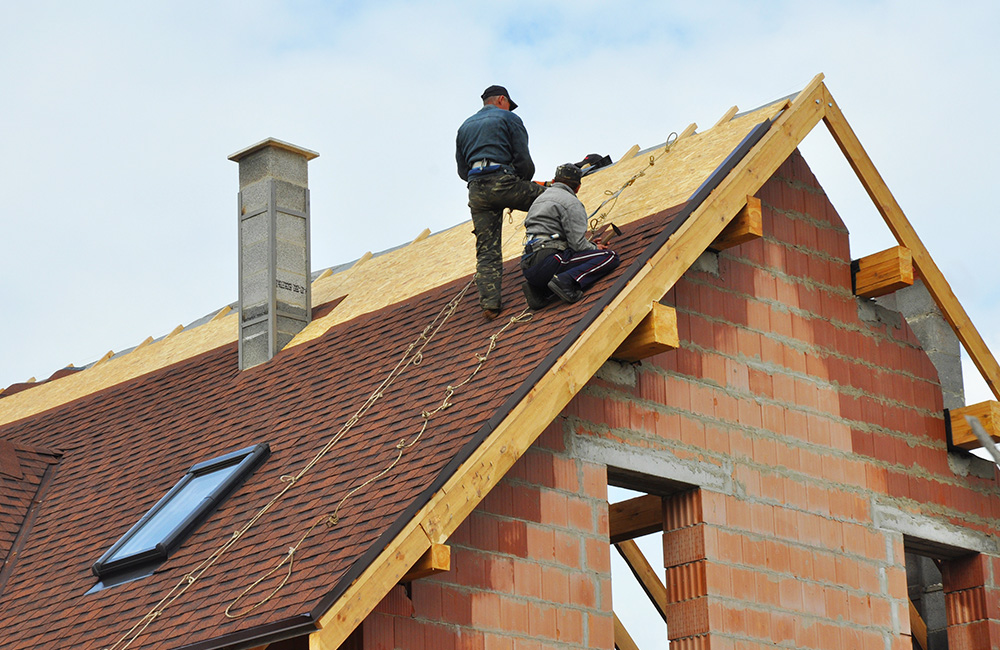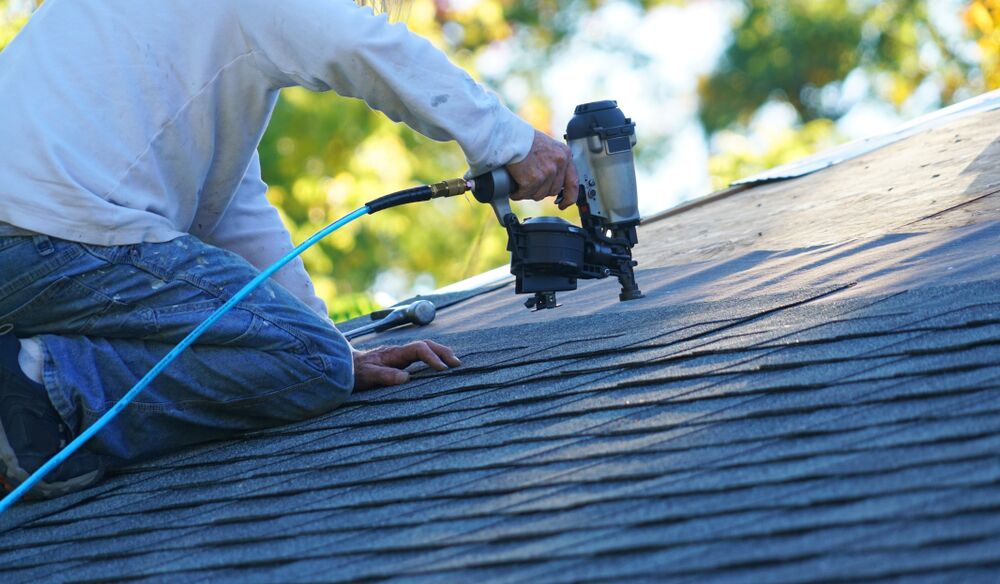Roofers Oahu: Specialist Roof Installations and Services
Roofers Oahu: Specialist Roof Installations and Services
Blog Article
Understanding the Various Sorts Of Roofing Systems: A Comprehensive Guide for Homeowners
With a range of alternatives-- ranging from the standard gable to the contemporary level-- each type provides special benefits and challenges that ought to straighten with the house owner's certain needs and environmental considerations. As we explore the intricacies of various roof types, it becomes noticeable that one dimension does not fit all; the best selection might surprise you.
Saddleback Roof
Gable roof coverings, identified by their triangular form, are among the most preferred roof styles because of their simplicity and performance in shedding water and snow. This style includes 2 sloping sides that meet at a ridge, enabling efficient drainage and minimizing the danger of water accumulation. The high pitch commonly connected with saddleback roofs improves their capacity to handle heavy precipitation, making them suitable for various climates.
Along with their functional benefits, saddleback roofs supply aesthetic versatility. They can be adjusted to numerous architectural designs, from conventional to modern-day homes. The style can additionally accommodate additional features such as dormer home windows, which boost natural light and ventilation in the attic room area.
Additionally, saddleback roofs supply enough space for insulation, adding to energy efficiency. Homeowners can select from a variety of roof products, consisting of asphalt tiles, metal, and tiles, additionally enhancing customization options.
Despite their advantages, saddleback roofs may call for additional support in areas susceptible to high winds or heavy snowfall. Overall, the saddleback roof remains a preferred selection as a result of its mix of performance, durability, and aesthetic appeal.
Flat Roofs
Flat roofings are frequently identified for their minimal layout and useful applications, particularly in industrial and commercial settings (oahu roofing). These roofing systems include a straight or almost horizontal surface area, which enables very easy building and functional area use. While they may lack the visual charm of angled roofs, flat roof coverings provide various advantages, especially in metropolitan settings where making best use of area is crucial
One of the main advantages of flat roofing systems is their accessibility. House owners can utilize the roof room for numerous objectives, such as roof gardens, balconies, or solar panel installments. In addition, flat roofing systems are normally a lot more cost-effective to preserve and install compared to their sloped equivalents, as they require less products and labor.
However, flat roofing systems do existing certain obstacles. Appropriate drain is essential to protect against water merging, which can cause leakages and structural damage. Hence, picking premium waterproofing products and normal examinations are crucial for ensuring durability. Common materials utilized for flat roof coverings consist of built-up roof (BUR), changed asphalt, and single-ply membranes, each offering distinct advantages. On the whole, level roofs act as a useful and adaptable option for several home owners and services alike.
Hip Roofing Systems
Hip roof coverings are defined by their sloped sides that merge at the top, developing a ridge. This layout stands out from saddleback roofs, as all 4 sides of a hip roofing slope downwards toward the wall surfaces, offering an extra stable framework. The angle of the inclines can vary, enabling convenience in architectural looks and performance.
One of the main advantages of hip roofs is their capacity to endure hefty winds and unfavorable weather problems. The sloped surfaces allow far better water drain, decreasing the threat of leakages and water damages. Furthermore, hip roof coverings use raised attic room area, which can be used for storage space and even converted right into livable locations.
However, building a hip roofing system can be extra intricate and expensive than less complex roof kinds, such as gable roofs. The added material and labor associated with developing the slopes and ensuring proper architectural stability can cause higher expenses. In spite of these disadvantages, numerous house owners prefer hip roofing systems for their longevity, aesthetic appeal, and capacity for power performance.
Mansard Roofs
Mansard roofing systems, usually identified by their unique four-sided design, feature 2 inclines on each side, with the lower incline being steeper than the upper. This architectural design, stemming from France in the 17th century, is not only cosmetically attractive however functional, as it maximizes the useful space in the upper floorings of a building. The steep lower incline enables even more clearance, making it an optimal choice for loft spaces or attics, which can be exchanged living spaces.
Mansard roof why not find out more coverings are defined by their flexibility, suiting numerous architectural styles, from traditional to modern. They can be created with different materials, consisting of asphalt tiles, slate, or metal, providing house owners with a series of alternatives to match their preferences and budget plans. Furthermore, the layout permits the combination of dormer home windows, boosting all-natural light and ventilation in the top degrees.
Nevertheless, it is vital to consider the potential downsides. Mansard roof coverings may need more upkeep as a result of the intricacy of their style, and their steep inclines can be challenging for snow and rain overflow. In general, mansard roof coverings combine beauty with usefulness, making them a preferred choice among house owners seeking distinctive architectural features.
Lost Roofing Systems
As property owners significantly seek simplicity and functionality in their architectural styles, lost roof coverings have emerged as a preferred choice. Defined by a single sloping aircraft, a shed roofing system provides a minimalist visual that enhances different home designs, from modern to rustic.
Among the main advantages of a shed roof covering is its straightforward construction, which often translates to reduce labor and product costs. This layout permits reliable water drain, minimizing the danger of leaks and water damage. Additionally, the upright incline supplies adequate room for skylights, boosting natural light within the interior.
Dropped roofing systems additionally provide versatility in terms of use. They can be properly integrated right into enhancements, garages, or outdoor structures like structures and sheds. In addition, this roofing design can accommodate different roofing materials, consisting of steel, asphalt roof shingles, and even green roofing systems, straightening with environment-friendly efforts.
Nonetheless, it is crucial to consider local environment problems, as heavy snow loads might require changes to the roof's angle or structure. Overall, lost roofs offer a functional and aesthetically pleasing choice for property owners looking to make best use of functionality without endangering design.
Final Thought


Gable roof coverings, characterized by their triangular shape, are among the most preferred roofing styles due to their simpleness and performance in losing water and snow. oahu roofing. The steep pitch generally connected with gable roofing systems boosts their capability to deal with hefty rainfall, making them appropriate for various climates
While they may do not have the aesthetic allure of pitched roof coverings, flat roofing systems use various benefits, especially in urban environments where optimizing space is critical.

Report this page